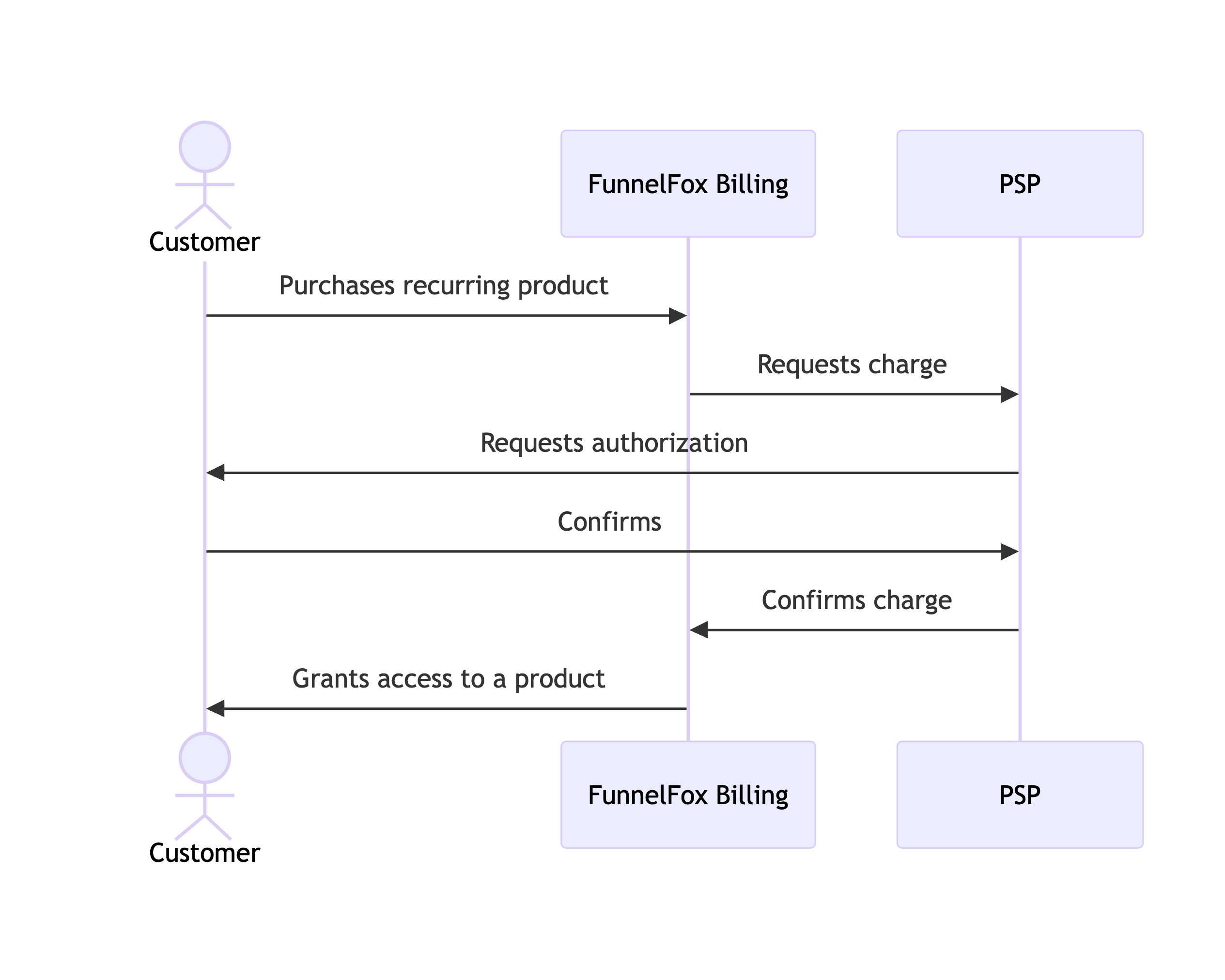Key insight: FunnelFox separates subscription management from payment
processing. PSPs only handle charge authorization while FunnelFox manages
everything else - subscriptions, retries, and customer lifecycle.
Payment routing
To configure payment routing for your workspace, please contact your Customer Success Manager. This is how FunnelFox Billing payment routing works:
1
Payment initiated
Customer submits payment in your funnel checkout.
2
Router evaluates
System checks routing rules.
3
PSP selected
Primary PSP attempted first, fallback if needed.
4
Charge processed
PSP authorizes card and processes payment.
5
Result handled
FunnelFox updates subscription based on result.
Retries
To learn about FunnelFox Billing retries mechanism, go to the detailed Retries section.Grace periods
When a payment fails, customers keep access while FunnelFox attempts retries. This grace period lasts until the final retry attempt fails. Grace period length varies by billing cycle—longer subscriptions get more time to recover failed payments.If a retry succeeds during the grace period, the billing cycle shifts forward to match the actual payment date.
- A subscription renews on July 1.
- Payment fails but succeeds on July 3.
- The next billing date becomes August 3 instead of August 1.
Next steps
- Configure Products & Pricing
